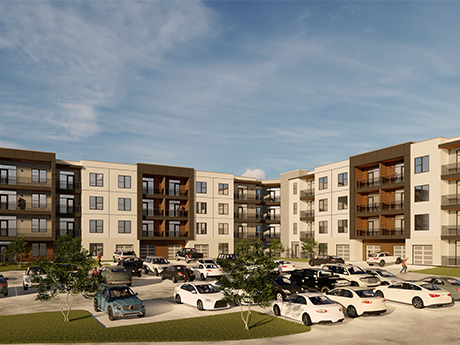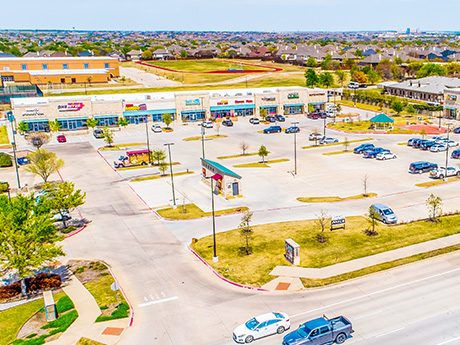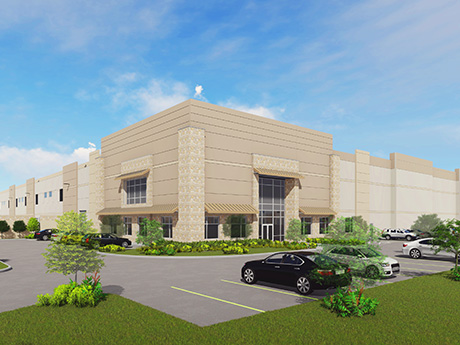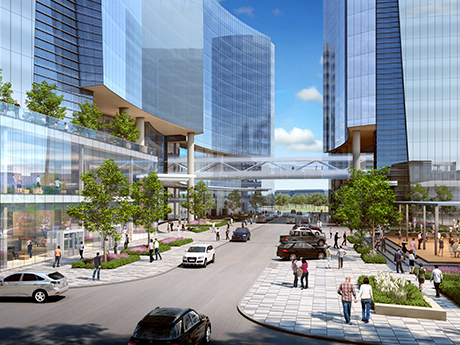By John Griggs, co-founder, co-CEO, Presidium Everything is bigger in Texas, including the opportunity for apartment investment, development and absorption — and the nation is catching on. In 2021, Dallas-Fort Worth (DFW) again led the country in the number of multifamily units delivered, adding more than 20,000 new residences for the fourth year in a row. With the thriving economy, lower taxes, central location and an influx of people moving to the area via natural net migration and corporate relocations, it’s not surprising that the demand for apartment units is at an all-time high. A study from RealPage reported that the issuance of North Texas apartment building permits saw a 27 percent uptick in the 12-month period between September 2020 and 2021, one of the heftiest increases among the 10 largest U.S. markets. While the hyper growth the DFW area is experiencing is a positive thing, it’s shaping the economic landscape so rapidly that developers have to adapt efficiently and effectively. Supply chain issues and production bottlenecks are further complicating this equation. Desirability Brings Demand A clear benefit for us in the current North Texas real estate industry is that population, job opportunities and incomes are surging. The flood of …
Market Reports
By Philip Levy, senior managing director, investments, Marcus & Millichap The Dallas retail climate is more favorable entering 2022 than it has been for most of the COVID-19 crisis. Overall, the marketwide retail vacancy rate fell 50 basis points during the first three quarters of 2021, ending at an even 6 percent in September. Nevertheless, that rate is about 100 basis points above the pre-pandemic level. A strong rebound in tenant demand is helping lower vacancy, however, with net absorption across the opening nine months of 2021 totaling more than 2.2 million square feet, compared with a net loss of 1.5 million square feet in 2020. Additionally, the construction pipeline has shrunk considerably, helping mitigate supply-side pressure as the market bounces back. As of the fourth quarter of 2021, less than 1 million square feet of new retail product with an expected completion date in 2022 was under construction in the greater Dallas area. This is a sharp contrast to the 2 million-plus square feet that developers delivered in each year between 2014 and 2020. Strengthening demand drivers amid a reduction in development suggest that downward pressure on vacancy will continue in the coming quarters. New Households Spend Near-term uncertainty …
By Conrad Madsen, SIOR, co-founder and partner, Paladin Partners; and Kipp Collins, partner, Paladin Partners Just 20 years ago, the conventional wisdom and commonly held belief throughout the Dallas commercial real estate scene was that office and retail were preferable sectors to be in versus industrial. Looking back and reflecting on how industrial has gone from ugly duckling to white swan in just 20 short years, we can’t help but be glad that we didn’t take that advice. Led by Amazon, e-commerce has truly changed the world, and certainly industrial real estate by extension. Everyone talks about how e-commerce is what’s driving the explosion of warehouse and distribution center development and absorption across Dallas-Fort Worth (DFW) and beyond. But the fact of the matter is, e-commerce still only accounts for about 14 percent of total retail sales, according to data from the U.S. Census Bureau. Think about that for a moment — the current proportion of 14 percent leaves a tremendous amount of room for additional growth. Demand for warehouse and distribution space is through the roof; developers can’t build warehouses fast enough these days, and yet the market is nowhere close to reaching its peak. Inventory Growth There is …
By Taylor Williams Office owners in Texas remain acutely aware of how the pandemic has changed the game and are not shying away from promoting health and wellness within their buildings. According to data from security firm Kastle Systems, which tracks keycard, fob and app access to some 2,600 office buildings across 138 cities and 47 states, office space in America’s largest markets continues to be underutilized. Across the 10 markets that Kastle Systems tracks, including Austin, Houston and Dallas, the average office occupancy rate in early December was 40.6 percent. Yet the three Texas markets all registered occupancy rates considerably above the national average — 59.3 percent, 54.9 percent and 52.3 percent, respectively — for Austin, Houston and Dallas. A more temperate climate in Texas could bear some responsibility for these above-average performances, given that access to functional outdoor spaces has undeniably become a key tenant demand during the pandemic. Along those lines, tenants have understood for some time now that successfully bringing their employees back to their offices is somewhat contingent on making sure those workers feel safe on the job. The onus, therefore, has fallen on office owners to ensure that their buildings have protocols through which …
By Zack Taylor, senior vice president, Colliers Houston’s industrial market continued to see strong leasing activity in the third quarter. Overall net absorption for 2021 should easily pass 20 million square feet, making it the best year on record by a long shot. For context, Houston’s industrial market has, on average, absorbed between 8 million and 11 million square feet of space per year since 2014. Houston’s North and Southwest submarkets absorbed the most space in the third quarter of this year, led by Lowe’s Home Improvement taking down 1.5 million square feet and Amazon taking 1.9 million square feet in each of those respective submarkets. Total marketwide leasing volume for the year is well over 30 million square feet and does not show any signs of stopping as we hit the midpoint of the fourth quarter. Direct vacancy is continuing its downward trend, but rental rates have largely remained the same on new product. Second-generation infill warehouses are experiencing the greatest increase in rents, especially for tenants with requirements between 20,000 and 50,000 square feet. Many of these tenants are faced with a dilemma: They can either accept higher rents for their infill locations or relocate to more expensive …
By Blake Virgilio, SIOR, CCIM, vice president at Colliers The Houston office market continued its very gradual stabilization with 27,000 square feet of positive absorption in the third quarter. While that volume of absorption only represents roughly one floor of office space in a typical Houston office building, it’s the first time the market has posted a quarter of positive net absorption in the last two years. The key activities of tenant tours and the return of employees to the office continued to increase throughout the third quarter. Nonetheless, the vacancy rate rose over the course of the quarter by 400 basis points from 22.9 to 23.3 percent, a historical high. Also in the most recent quarter, Houston’s office inventory increased slightly, with approximately 1 million square feet of new product added. There is still 3.2 million square feet of office space under construction, and most of the new inventory, which is 47 percent preleased, is expected to deliver this year. Of that total new product, about 2.3 million square feet is spec development, of which 60 percent is preleased. Houston has one of the highest physical office occupancy rates in the country, though many larger corporations began phasing their …
By Jeff Tinsley, senior advisor, SVN | J. Beard Real Estate – Greater Houston As we reach the end of the calendar year, it’s become clear that 2021 has been a year of transition. Many new trends are emerging from the pandemic year of 2020 with regard to retail real estate. COVID-19-induced trends within shopping, dining and entertainment have given rise to a new generation of retailers to the Houston market. Many quick-service restaurants (QSRs) are looking to reduce store sizes for future locations and focus on streamlining their drive-thru, call in and pick-up order service. Some restaurant concepts are instilling the use of “ghost kitchens” and are aggressively looking to lease second-generation spaces in order to take advantage of the growing takeout and delivery demands. During the pandemic, one of the hardest-hit sectors was in the restaurant industry. Following months of minimized interaction between customers and proprietors due to dining room closures, we are now seeing a greater increase in pick-up and delivery requirements. Many restaurants are now using new technology and methods in terms of how service is offered, how food is prepared and how kitchen and service areas are designed. Furthermore, many food and …
By Jeffrey Brown, FAIA, founding principal and CEO, Powers Brown Architecture San Antonio, with its 1.5 million residents, occupies an enigmatic identity, flying under the radar as the second-largest city in Texas and the seventh-largest city in the nation. Located between the south and central regions of the Lone Star State, San Antonio’s economy is fueled by tourism, military, financial services, energy and healthcare providers. Its lower-than-average cost of living and high quality of life make the “Alamo City” attractive for development. There is no mystery about San Antonio’s steady growth among locals, including developers, several of whom have created exciting new hyper-urban mega-developments in Central Business District (CBD)-adjacent locations. The recent announcement of Riverplace by Universal Services Group, part of the development team behind the recently completed Thompson Hotel and Arts Residences, reached an agreement last December with the City of San Antonio that paves the way for a $400 million development in the center city. Anchored by the Dream Hotel, Riverplace is the newest bookend to the various new projects and developments in the CBD, with the oldest bookend being the Pearl District, one of the original CBD-adjacent efforts. Riverplace and the Pearl District make up either end …
By Joe Iannacone, senior vice president, Titan Development; and Omar Nasser, senior vice president, AQUILA Commercial The Central Texas industrial market stretches between Austin and San Antonio along the Interstate 35 “Innovation” Corridor, an approximately 80-mile expanse that encompasses some of the fastest-growing cities in the nation. Austin, now the 10th-largest city in the nation population-wise, continues to see unprecedented growth in the tech, e-commerce and household industry sectors. Most notably, Tesla decided to construct its Cybertruck Gigafactory in East Austin along State Highway 130, which has and will be a boon to the region. The electric car maker also recently announced plans to relocate its headquarters from Silicon Valley to Austin. San Antonio, the nation’s seventh-largest city, has seen continued growth in the automotive, financial, life sciences and food and beverage sectors. Large companies continue to flock to the region to establish a major presence, including USAA, H-E-B and Toyota. The markets in between Austin and San Antonio from south to north — Schertz, New Braunfels, San Marcos, Kyle and Buda — have benefitted from the synergies of both markets due to their location and strong economies. As a result of the continued economic activity and with the effects …
Content PartnerDevelopmentFeaturesHeartland Feature ArchiveHospitalityIndustrialLeasing ActivityLee & AssociatesMarket ReportsMidwestMultifamilyNortheastNortheast Feature ArchiveOfficeRetailSoutheastSoutheast Feature ArchiveTexasTexas & Oklahoma Feature ArchiveWesternWestern Feature Archive
Lee & Associates Breaks Down Third-Quarter Economic Outlook by Sector
The calculus for which asset classes are likeliest to demonstrate strong growth continues to shift as the pandemic appears to be receding. Patterns in labor shortages, supply chain issues and material costs have managed to solidify through the third quarter of 2021. Lee & Associates’ newly released Q3 2021 North America Market Report dissects third-quarter 2021 industrial, office, retail and multifamily findings, with a focus on where demand is moving and the challenges facing each asset class. Lee & Associates has made the full market report available at this link (with further breakdowns of factors like vacancy rates, market rents, inventory square footage and cap rates by city). Below is a bird’s-eye overview of four commercial real estate asset classes as general categories, broken down to frame each through the trends and complications they faced up to the fourth quarter, according to Lee & Associates’ research. Industrial: Q3 Posts More Record Demand Pandemic-fueled consumer spending drove up third-quarter demand for warehouse and distribution facilities that eclipsed previous records. And despite a nationwide surge in new construction, some metros can barely accommodate the pace of tenant expansion. Additionally, year-over-year rent growth is at a record 6.7 percent for the industrial property sector …











